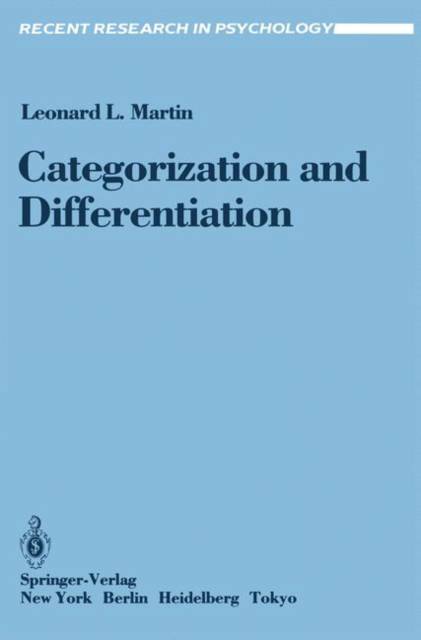
- Afhalen na 1 uur in een winkel met voorraad
- Gratis thuislevering in België vanaf € 30
- Ruim aanbod met 7 miljoen producten
- Afhalen na 1 uur in een winkel met voorraad
- Gratis thuislevering in België vanaf € 30
- Ruim aanbod met 7 miljoen producten
Zoeken
Categorization and Differentiation
A Set, Re-Set, Comparison Analysis of the Effects of Context on Person Perception
Leonard L Martin
€ 167,95
+ 335 punten
Omschrijving
In the context of interpersonal interaction, it is possible to characterize human beings as complex sources of information. When interacting with one another, people in- tentionally, as well as unintentionally, emit cues which other people can use as a basis for generating inferences and forming impressions about them. As a rule, the informa- tion that one receives about another person is complex, mutable, and multidimensional. Often, it is contradictory. One of the more enduring lines of investigation in social psychology has been concerned with understanding the processes whereby people mold such diverse information into a single, unified impression. The linear approach The most influential approach to this issue in recent years has been Anderson's information integration theory (e. g., Anderson, 1974). The goal of this approach to im- pression formation is the formulation of an algebraic model which describes the relation between stimulus input charac- teristics and reported judgments. According to information integration theory, a stimulus is characterized hy two parameters: scale value and weight. The scale value of a stimulus represents the perceiver's subjective response to the information on the dimension of judgment (e. g., good-bad, light-heavy, like-dislike). The weight of a stimulus is its importance or relevance to the judgment. It is perhaps best conceptualized as the proportion that each element of a compound stimulus contributes to the overall evaluation of the compound.
Specificaties
Betrokkenen
- Auteur(s):
- Uitgeverij:
Inhoud
- Aantal bladzijden:
- 87
- Taal:
- Engels
- Reeks:
Eigenschappen
- Productcode (EAN):
- 9780387961507
- Verschijningsdatum:
- 8/07/1985
- Uitvoering:
- Paperback
- Formaat:
- Trade paperback (VS)
- Afmetingen:
- 156 mm x 234 mm
- Gewicht:
- 145 g

Alleen bij Standaard Boekhandel
+ 335 punten op je klantenkaart van Standaard Boekhandel
Beoordelingen
We publiceren alleen reviews die voldoen aan de voorwaarden voor reviews. Bekijk onze voorwaarden voor reviews.











